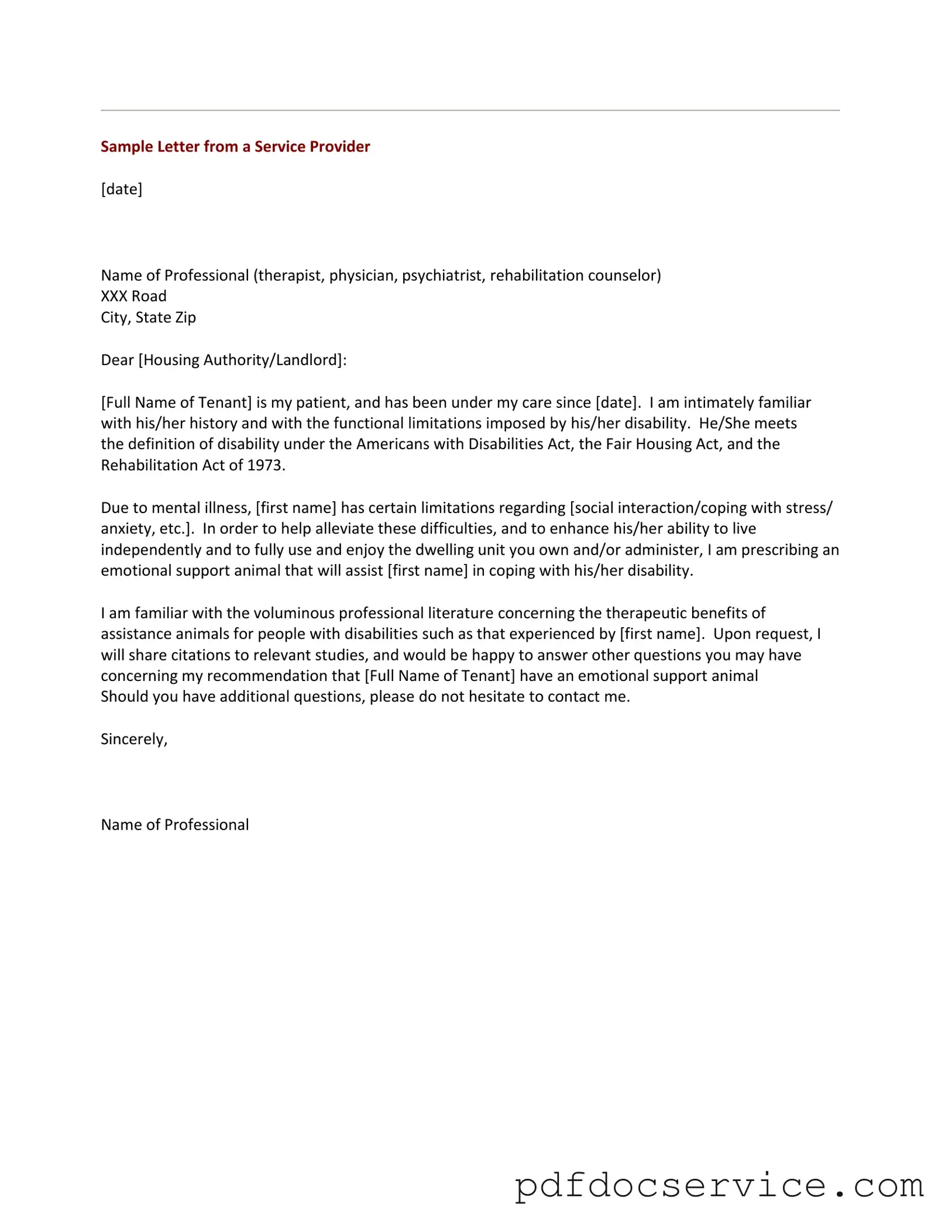What is an Emotional Support Animal Letter?
An Emotional Support Animal (ESA) letter is a document written by a licensed mental health professional. This letter confirms that an individual has a mental or emotional disability and that their animal provides necessary support. Unlike service animals, ESAs do not require specific training to perform tasks. Instead, they offer companionship and comfort, helping to alleviate symptoms of anxiety, depression, or other emotional challenges.
Who can provide an ESA letter?
Only licensed mental health professionals, such as psychologists, psychiatrists, or licensed clinical social workers, can issue an ESA letter. It's crucial that the professional has a thorough understanding of your mental health needs. When seeking an ESA letter, consider the following:
-
Ensure the professional is licensed in your state.
-
Discuss your emotional or psychological condition openly.
-
Ask if they have experience with ESA letters specifically.
An effective ESA letter should include several key pieces of information to be valid. These typically include:
-
Your name and the name of your emotional support animal.
-
A statement confirming your mental health condition.
-
A declaration that the animal provides emotional support.
-
The mental health professional's contact information and license number.
-
The date the letter was issued.
Having all this information ensures that the letter meets the requirements set by housing authorities or airlines.
Can I use an ESA letter for housing or travel?
Yes, an ESA letter can be used to request reasonable accommodations in housing situations and for travel. Under the Fair Housing Act, landlords must allow emotional support animals, even in buildings with no-pet policies. Similarly, airlines may accept ESA letters to allow animals in the cabin. However, it's essential to check the specific policies of your housing provider or airline, as requirements can vary.
How do I obtain an ESA letter?
To obtain an ESA letter, follow these steps:
-
Schedule an appointment with a licensed mental health professional.
-
Discuss your mental health challenges and how an ESA could help.
-
If deemed appropriate, request the ESA letter during your consultation.
Be prepared to provide any necessary documentation of your mental health condition. Once you receive the letter, keep it accessible, as you may need to present it when applying for housing or traveling.
